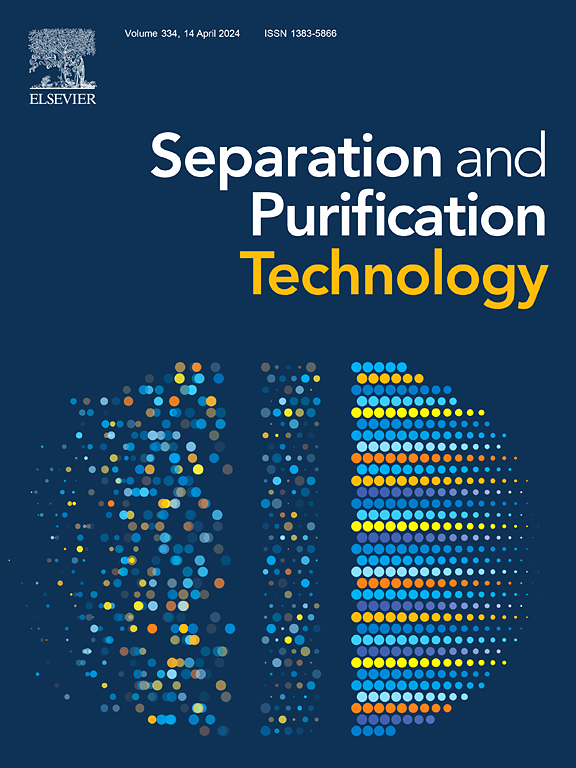Advancing energy-efficient CO2 capture with organic amine solutions using ionic liquid absorption promoters and zeolite molecular sieve desorption catalysts
IF 8.1
1区 工程技术
Q1 ENGINEERING, CHEMICAL
引用次数: 0
Abstract
Alkanolamine solutions have been widely used for CO2 capture due to their low cost and stable performance. However, their inherent structural limitations led to significant challenges, such as low CO2 absorption–desorption capacity and high energy demands for regeneration. To address these issues, this work proposes an efficient CO2 capture system that employs 2-(2-aminoethylamino)ethanol (AEEA) as the primary absorbent due to its stable performance, amino-functionalized ionic liquid (AIL) synthesized via a one-step method as absorption promoters, and an appropriate amount of solid acid catalyst (SAC) as desorption catalysts. The experimental results demonstrated that the composite system comprising 20 wt% AEEA (primary absorbent), 10 wt% [DETAH][Pz] (absorption promoter), and 0.1 wt% HZSM-5 (desorption catalyst) represents the optimal configuration. The system achieved a CO2 absorption capacity of 0.50172 g CO2/g amine for the fresh solution, which decreased to 0.42619 g CO2/g amine after five regeneration cycles, maintaining 84.95 % of the original capacity. The desorption ratio exceeded 85 %, while regeneration energy consumption was reduced by 30.22 % compared to the MEA/water system. Notably, the inclusion of the HZSM-5(21) catalyst significantly enhanced the CO2 desorption process during the initial 20 min. The desorption amount increased by 62.78 % relative to the non-catalytic system, the average desorption rate improved by 40.85 %, and the peak desorption rate rose by 31.94 %, resulting in a more efficient and complete CO2 desorption process. Analysis using 13C NMR demonstrated that the synergistic absorption effect between AEEA and [DETAH][Pz] significantly improved the CO2 absorption capacity of the system. Meanwhile, the Brønsted and Lewis acid sites on the HZSM-5(21) molecular sieve, along with [Pz]-H, effectively facilitated the decomposition of carbamates, thereby catalyzing the CO2 desorption process.求助全文
约1分钟内获得全文
求助全文
来源期刊

Separation and Purification Technology
工程技术-工程:化工
CiteScore
14.00
自引率
12.80%
发文量
2347
审稿时长
43 days
期刊介绍:
Separation and Purification Technology is a premier journal committed to sharing innovative methods for separation and purification in chemical and environmental engineering, encompassing both homogeneous solutions and heterogeneous mixtures. Our scope includes the separation and/or purification of liquids, vapors, and gases, as well as carbon capture and separation techniques. However, it's important to note that methods solely intended for analytical purposes are not within the scope of the journal. Additionally, disciplines such as soil science, polymer science, and metallurgy fall outside the purview of Separation and Purification Technology. Join us in advancing the field of separation and purification methods for sustainable solutions in chemical and environmental engineering.
 求助内容:
求助内容: 应助结果提醒方式:
应助结果提醒方式:


